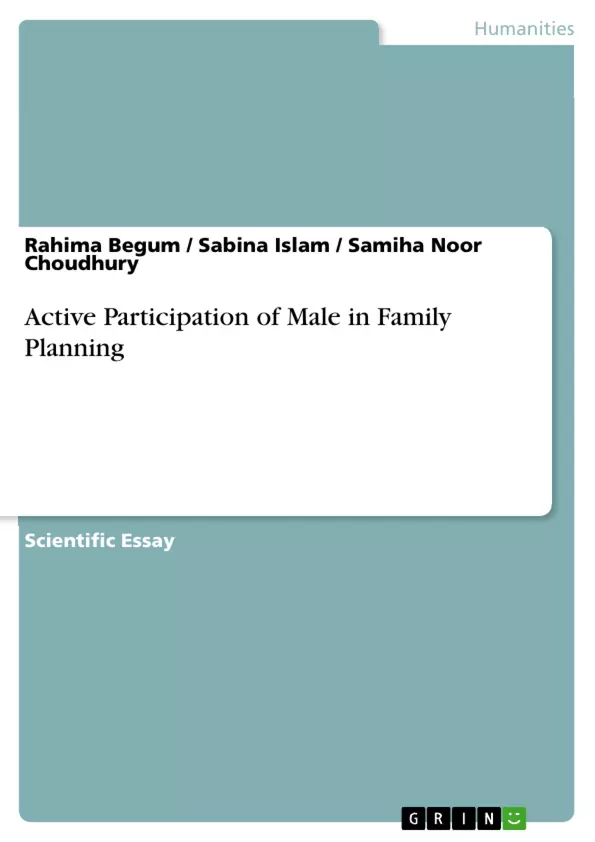Men are partners in reproduction and sexuality. It is therefore required that both men and women equally share satisfying sexual lives and the burden of preventing diseases and health complications. This paper studies the status of male active participants in family planning in Bangladesh and further explores the associated determinants. The study makes use of Bangladesh Demographic Health Survey, 2007 data (BDHS-2007). Bivariate analysis shows that age of the respondent, age of the partner, family type, respondent’s desire for more children, partners’ desire for more children, discuss FP with partner, education of the respondent, education of the partner and division are significantly associated with active participation of male in family planning. Logistic regression analysis identifies four significant determinants of active participation of male in family planning which are age of the respondent, age of the partner, education of the partner and discuss family planning with partner.
Inhaltsverzeichnis (Table of Contents)
- INTRODUCTION
- DATA AND METHODOLOGY
- RESULTS
- Differentials in active participation of male in family planning
- Determinants of the active participation of male in FP
- DISCUSSION AND CONCLUSION
- REFERENCES
Zielsetzung und Themenschwerpunkte (Objectives and Key Themes)
This paper investigates the level of male active participation in family planning in Bangladesh and explores the factors that influence this participation. The study utilizes data from the Bangladesh Demographic Health Survey (BDHS) 2007.
- The role of men in family planning and reproductive health.
- Factors influencing male participation in family planning in Bangladesh.
- Analysis of data from the BDHS 2007.
- Demographic and socio-economic characteristics related to male participation in family planning.
- The impact of spousal communication and cultural factors on family planning practices.
Zusammenfassung der Kapitel (Chapter Summaries)
The introduction defines male involvement in family planning as men's decisions regarding reproductive health issues, including the control of fertility through active participation. It discusses the historical and societal perspectives on male participation in family planning and highlights the importance of men sharing the responsibility of preventing diseases and health complications.
The data and methodology section outlines the utilization of the BDHS 2007 data, which includes a matched sample of 3771 husbands and their wives. The study employs bivariate analyses and binary logistic regression techniques to analyze the factors associated with male active participation in family planning. The dependent variable is 'Active participation of male', which takes the value 'one' if the respondent actively participates in family planning by using any of the methods, such as condom, male sterilization, withdrawal, and periodic abstinence.
The results chapter explores the differentials in male active participation in family planning, examining the relationship between this participation and various background characteristics, including age of the respondent, age of the partner, family type, respondent's desire for more children, partner's desire for more children, discussing family planning with a partner, education of the respondent, education of the partner, and the division of residence.
Schlüsselwörter (Keywords)
The paper primarily focuses on male participation, family planning, contraception, Bangladesh, BDHS 2007, demographic factors, socio-economic characteristics, spousal communication, cultural factors, and reproductive health.
- Quote paper
- Musammad Rahima Begum (Author), Dr. Sabina Islam (Author), Samiha Noor Choudhury (Author), 2017, Active Participation of Male in Family Planning, Munich, GRIN Verlag, https://www.grin.com/document/380372



